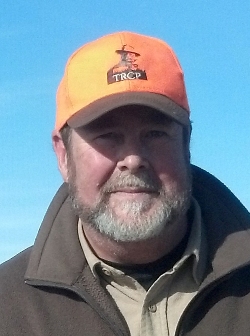Decades of reduced harvest, aggressive fire suppression, lack of prescribed fire and poor livestock grazing practices, coupled with drought and invasive species eruptions, have left millions of acres of federal forestlands in unhealthy conditions.
Many of our public forests provide little native grassland and young forest habitat for bobwhites and other species that depend on these habitats. These conditions increase risk of severe wildfires and threaten watersheds that provide drinking water to millions of Americans. I, along with Dan Dessecker, policy director of the Ruffed Grouse Society, led a special session at the 81st North American Wildlife and Natural Resources Conference recently to explore the past and current situation regarding forest management on public lands and address needed administrative and legislative reforms to improve active forest management policy and better address multiple objectives on public forest lands.
The current level of active management on federal forest lands is insufficient to address the scope and scale of forest health issues and fuel reduction. In addition, the majority of the U.S. populace resides east of the Great Plains, as does the majority of our federal elected officials, often creating a disconnect and different values for our federal forestlands. The future for forest ecosystem management is now uncertain based in part on the lack of current and improbable future social consensus concerning desired outcomes for public forestlands; the need for significant financial investment in forest ecosystem restoration; a lack of integrated planning and decision tools; and a disconnect between the existing planning process, congressional appropriations, and complex management and restoration problems.
There is clear scientific evidence indicating that the ecological integrity of our nation’s public forest lands and the social fabric of nearby rural communities are imperiled. It is essential to make federal forest land management policy relevant to all interests so that the necessary statutory, regulatory, and fiscal fixes can be applied.
Can we move beyond the rhetoric (“mandated timber harvest targets”, “benign neglect,” “stripping environmental regulation,” “analysis paralysis,” “unnecessary litigation”) and address this reality? Balanced, common sense legislation and administrative processes that allow for science-based active management of our public forestlands to conserve wildlife, enhance forest health and protect water quality while meeting society’s needs and interests is a lofty but achievable goal.
The presentations provided different perspectives on the broad reach of current forest management policies. Speakers focused on the past, present and future of forest conditions and management on public lands as well as what forest science is telling us about the condition of our forests. A panel composed of leaders of the Theodore Roosevelt Conservation Partnership, National Wild Turkey Federation, The Nature Conservancy and Weyerhaeuser Company spoke about how to balance forest management through national policy reform that can benefit wildlife and other natural resource values. The Wildlife Management Institute will publish a record of this session later this year.






